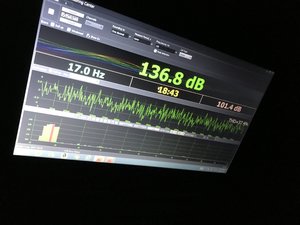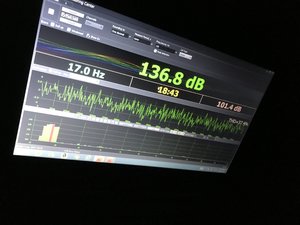@90skis. may be i am just panicking. Please do let me know if one window was all the way down and DB level was only 60-70.
This summer, Postmedia's Tom Spears brings you the often offbeat science behind the season that calls us to go outdoors. It's all part of a series we call the Science of Summer. Today's story is on why the open rear window of a car can make your ears hurt while you're driving.
If you've ever turned your head on the highway to yell at someone to close the back window, a physicist in Waterloo has an explanation for why the experience hurts your ears.
Much of the sound from the open rear window is outside the range of human hearing. But it's still a powerful force battering your eardrums, says John Vanderkooy.
And it's all because your car acts like an empty pop bottle, when you blow across the bottle to make a musical note.
Vanderkooy studies sound at the Audio Research Group of the University of Waterloo, so I asked him about this.
"I've actually measured the noise level in cars, but I have stayed away from the noise level from opening the back window because that is such a high level, and so unpleasant, that people don't leave it (open.) They always close the window," he said.
Later, intrigued, he took off in an elderly BMW loaded with microphones to measure it.
"It's infrasound" — meaning a note too low for us to perceive it as sound — "but it actually presses on the ear so hard that it causes an oppressive feeling," he explained.
"It's changing the air pressure. It's basically the same thing as blowing across the top of a Coke bottle."
In both cars and bottles, air is flowing across the only opening in an object filled with air. Air flows in through the hole, but the air already inside the car (or bottle) acts like a spring to push the new air back out. But inertia carries too much air out. More comes back in.
"The air is … going into and out of the car," the professor said. "It is oscillating back and forth. The airstream, as it comes by the window, will send an eddy into the car and then pull air out and then put it in and out again, so it flagellates back and forth.
"It's a very powerful thing." He calls it a "pulsating" effect.
There's also a technical name for it: a Helmholtz resonator, named for the 19th-century German physicist who designed and studied sound in chambers with one hole. Go on, tell your friends you drive one of these.
But if you open a second window, the effect goes away "because that represents an alternate exit for the Helmholtz resonator, so it takes away the strength of the oscillation." In other words, air can escape out the second window, rather than going back and forth through only one.
With air cycling in and out fewer than 20 times a second, the sound has such a low frequency that we do not hear it in the normal sense. It's like a note too far past the left end of the piano keyboard.
"You will experience it with your ear but it's not audible in the normal sense of the word," Vanderkooy said.
"You can still feel it in your ears if it's loud enough, and it's certainly loud enough when you roll down the rear window."
The empty soda bottle's air vibrates faster — a few hundred times per second — so we can hear that clearly as a musical note.
Driving with the front window open doesn't cause the painful pulsating effect because the air flow is different. Vanderkooy says air flow past the rear window is smooth. Meanwhile air flow at the front window is swirling and "confused" because it is filled with eddies flowing off the windshield. But it's still uncomfortable.
But the professor wasn't done when the initial interview ended. That's when he volunteered to do some measurements, taking his car (a 1992 BMW 325i sedan) for a 100-km/h spin with one rear window open, and instruments packed inside.
What he found surprised him.
First, although humans can't truly hear that rear window noise, it certainly is powerful: it hits peaks of pressure of 100 pascals, equivalent to 130 decibels. There's a good reason why our ears can't stand it for long.
Second, he expected to find a disorderly pattern to the air flow from the rear window but instead found a very regular, pulsating one, "even though the ears think that it is quite distorted, presumably due to overload in the ears themselves."
The frequency was a little less than 20 hertz (while the two lowest notes on a piano are both in the high 20s.) The frequency did not change as he made the window opening larger or smaller.
Vanderkooy also measured what happens with only a front window open: Again it can get loud but the pattern doesn't cause the regular pulsating of the rear window.
His full title is impressive, by the way: distinguished professor emeritus in the physics and astronomy department at Waterloo.
tspears@postmedia.com
twitter.com/TomSpears1
Agriculture Canada attacked credibility of WHO cancer warnings on meat: documents
Science of summer: How blue jays plant forests
TRENDING STORIES
Click to view the article in a new tab
Read More
‹ Previous
Next ›
Comments
We encourage all readers to share their views on our articles and blog posts. We are committed to maintaining a lively but civil forum for discussion, so we ask you to avoid personal attacks, and please keep your comments relevant and respectful. If you encounter a comment that is abusive, click the "X" in the upper right corner of the comment box to report spam or abuse. We are using Facebook commenting.
Visit our FAQ page for more information.

 Member
Member

